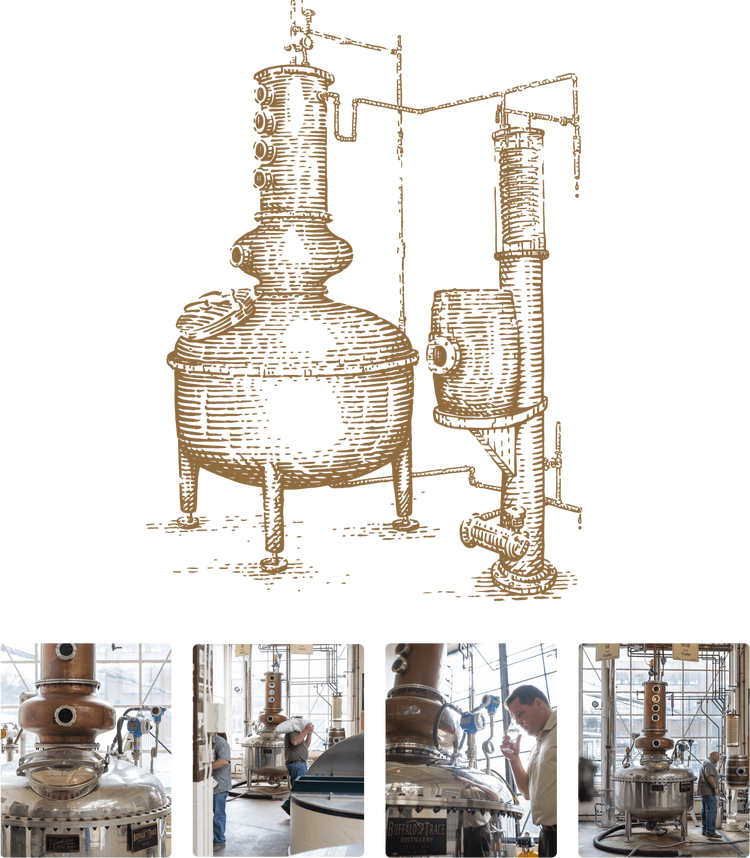About Wheatley
Distilling Wheatley Vodka
Wheatley craft vodka comes from the world’s most award-winning distillery, backed by 200 years of distilling experience. Buffalo Trace Distillery is known for its legendary bourbons like Pappy Van Winkle, Weller, E.H. Taylor, and Blanton’s, but the Distillery has a long history of crafting other spirits, including vodka.
VODKA DISTILLING AT BUFFALO TRACE
Master Distiller Harlen Wheatley has been a driving force behind the Distillery’s quest to create a premium craft vodka. Some years ago, he decided to embark on a project to craft the perfect vodka. Through the commitment and meticulous craftsmanship of a dedicated team, one of the Distillery’s first and finest vodkas, HDW CLIX, came to fruition. CLIX, or 159 in Roman numerals, represents the 159 separate distillations that were required to produce this ultra-fine spirit.
Following CLIX, Harlen set out to create the craft vodka that would bear his name. Made with the same red winter wheat and limestone water that the Distillery uses in its award-winning bourbons, Wheatley Vodka is crafted in small batches and distilled ten times over. The result, according to Harlen Wheatley himself, is “how vodka is supposed to taste.”


Straight from the source
When a Master Distiller puts his name on a vodka, it means something. Harlen knows what it takes to craft an award-winning spirit and that’s just what he’s done with Wheatley Vodka. Here’s a little insight into how and why he did it.




We know what it does each time, each distillation, and we felt like the ten times was just right for it.

Wheatley provides a really nice base. It’s got nice delicate vanilla notes on it. It actually has some flavor, where in most vodka all you can taste is the alcohol.

- Greg Galganski
- Proof on Main
I choose to use Wheatley Vodka in my cocktails because it is the best made vodka on the market today in its price category. As most people know, Buffalo Trace produces the finest bourbons on the planet. They use the same quality ingredients to make this vodka, which is distilled a ridiculous ten times.

- Jason Curtsinger
- Belles Cocktail House
It’s not intimidating, it’s not overpowering, it’s just well rounded. I think with the wheat in the vodka it just softens it, but doesn’t lose the quality or strength of the liquor. I’ve had it in every vodka cocktail since we’ve opened.

- Matthew Wesolik
- Clever Rabbit
FAQs
How is Vodka Made?
Choose the base
Vodka can be made from a wide variety of vegetables and grains, with options ranging from beets to barley, and many use a combination. Wheatley Vodka is made from red winter wheat along with other grains.
Prepare the mash
The grains or vegetables are broken down and heated to sterilize the mash and begin the process of converting the starches into sugars.
Ferment the mash
Yeast is added to the mash. Over the next several days, enzymes in the yeast convert the sugars in the mash into alcohol.
Distill, distill, distill
The liquid alcohol produced during fermentation is pumped into stills and heated. The vapors from the alcohol are released and condense in the still. The process is repeated over and over, removing impurities and concentrating the spirit. The smooth, soft taste of Wheatley Vodka is achieved after ten rounds of distillation.
Add water
Water is added to the concentrated spirit to bring the vodka down to its final proof. Vodkas can range from a standard 80 proof (40% alcohol by volume) to a staggering 176 proof (88% alcohol by volume).
Bottle and ship
Once the final proof is achieved, the vodka is bottled, sealed and distributed.
